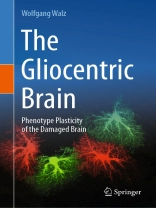Table of Content
1. Introduction
2. The Brain as an Organ
2.1. Introduction
2.2. Neurons and their Demands of Their Microenvironment
2.3. Extracellular Space
2.4. Blood Supply
2.5. Glial Cell Relationships and Lineage
2.6. Brain Fluid Compartments and Their Borders
2.7. Brain Fluid Dynamics
2.7.1. Brain Blood Supply
2.7.2. Cerebrospinal Fluid
2.7.3. Glymphatic System
2.8. Conclusions
3. Life Cycle
3.1. Introduction
3.2. Neuro- and Gliogenesis
3.3. Glial Cell Function in the Adult Brain
3.3.1. Astrocytes
3.3.1.1. Neurovascular Unit
3.3.1.2. Energy Metabolism
3.3.1.3. The Tripartite Synapse
3.3.1.4. Transmitter Homeostasis
3.3.1.5. Ion Homeostasis
3.3.1.6. Synaptic Plasticity
3.3.1.7. Synchronization of Neuronal Network Activity
3.3.1.8. Supply of Neurotrophic Factors
3.3.1.9. Control of Systemic Metabolism
3.3.1.10. Integration of Astrocytic Functions
3.3.2. Oligodendrocytes
3.3.2.1. Saltatory Conduction
3.3.2.2. Potassium Siphoning
3.3.2.3. Oligodendrocyte-Lactate Shuttle
3.3.2.4. Adaptive Myelination
3.3.3. Oligodendrocyte Precursor Cells
3.3.4. Microglia
3.4. Glial Cell Changes during Normal Non-Pathological Aging
3.5. Conclusions
4. Reactive Microglia and Astrocyte Phenotype Transitions
5. Transition of Microglia to Reactive States
5.1. Microglia Classification
5.2. Defining Reactive Microglia
5.2.1. Cytokine Secretion
5.2.2. Phagocytosis and Cytotoxicity
5.2.3. Anti-inflammatory Factors
5.3. Control of Microglia by Neuronal Factors
5.3.1. Neuronal Inhibitory OFF Factors
5.3.2. Neuronal Activating ON Factors
5.4. Pattern Recognition Receptor Activation
5.4.1. Toll-like Receptors
5.4.2. Nucleotide-Binding Oligomerization Domain-like Receptors and Inflammation Assembly
5.4.3. Retinoic Acid-Inducible Gene-1-like Receptors
5.4.4. Receptors Facilitating Phagocytosis
6. Reactive Astrocytes
6.1. Introduction
6.2. Signals which Shift Astrocytes into a Reactive State
6.3. Interactions with Microglia
6.4. Proliferation
6.5. Reactivity and Functions
6.6. Innate Immunity
6.7. Proliferative, Border-Forming Reactive Astrocytes
7. Neuroinflammation
7.1. Introduction
7.2. Cytokine Signalling in Learning and Memory
7.3. Social Stress and Cytokine Networks
7.4. Cytokine-mediated Sickness Behavior
7.5. Pathological Neuroinflammation
7.6. Anti-inflammatory Actions and Repair
7.7. Chronic Neuroinflammation
7.8. Comparison of Neuroinflammation with Peripheral Inflammation
8. The Brain and the Immune System
8.1. Introduction
8.2. Innate Immune Responses of the Brain
8.3. Adaptive Immune Response
9. Viral and Bacterial Infections
9.1. Major Infection Pathways
9.2. Latent Infections
9.3. Viral Infections
9.3.1. Viral Infections of Neurons
9.3.2. Viral Infections of Non-neuronal Cells
9.3.3. Viral Encephalitis
9.4. Bacterial Infections
9.5. Conclusions
10. Autoimmune Reactions
10.1. Introduction
10.2. Immunological Tolerance
10.3. Autoimmune Encephalitis
10.4. Multiple Sclerosis and its Animal Model – Autoimmune Encephalomyelitis
10.5. Cuprizone Model of Demyelination
10.6. Conclusions
11. Adult Glial Cell Proliferation and Neurogenesis
11.1. Introduction
11.2. Proliferation of Adult Glia
11.3. Adult Neurogenesis
11.3.1. Subependymal Zone
11.3.2. Subgranular Zone of the Hippocampus
11.3.3. Hypothalamic Ventricular Zone
11.3.4. Adult Neurogenesis after Injury
11.4. Conclusions
12. Glioma
12.1. Introduction
12.2. Primary Brain Tumors
12.3. Gliomas
12.3.1. Characterization of Gliomas
12.3.2. Glioma Stem Cell versus Cell-of-Origin
12.3.3. Tumor Microenvironment
12.4. Metastatic Colonization
12.5. Conclusions
13. Neurodegenerative Disorders
13.1. Introduction
13.2. Alzheimer Disease
13.3. Parkinson’s Disease
13.4. Huntington’s Disease
13.5. Amyotrophic Lateral Sclerosis
13.6. Prion Disease
13.7. Conclusions
14. Vascular Diseases
14.1. Introduction
14.2. Ischemic Stroke
14.2.1. Introduction
14.2.2. Time Course of Cellular Interactions
14.2.3. Repair and Remodeling after an Ischemic Stroke
14.2.4. Ischemic Preconditioning
14.3. Hemorrhagic Stroke
14.4. Vascular Cognitive Impairment
14.5. Conclusions
15. Seizures
15.1. Introduction
15.2. Reactive Gliosis and Epilepsy
15.3. Causes of Idiopathic Epileptogenesis
15.4. Are Reactive Astrocytes a Cause of Acquired Epileptogenesis?
15.5. Ictogenesis Due to Reactive Gliosis
15.6. Microglia and other Cells of the Immune System
15.7. Conclusions
16. Traumatic Brain Injury
16.1. Introduction
16.2. Mild Traumatic Brain Injury / Concussion
16.3. Penetrating Brain Injury
16.4. Explosive Blast Injury
16.5. Conclusions
17. Major Psychiatric Disorders
17.1. Introduction
17.2. Schizophrenia
17.3. Mood Disorders / Suicide
17.3.1. Introduction
17.3.2. Major Depressive Disorder
17.3.3. Bipolar Disorder
17.3.4. Suicide Behavior
17.4. Anxiety Disorders
17.5. Substance Use Disorders
17.5.1. The Brain Reward System
17.5.2. Alcohol Use Disorder
17.5.3. Opioid Use Disorder
17.5.4. Nicotine Dependence
17.6. Conclusions
18. Glia in Recovery Processes and Repair
18.1. Introduction
18.2. Remyelination
18.3. Neurotrophic Factor Production
18.4. Axonal Sprouting and Synaptogenesis
18.5. The Complex Role of Microglia and Macrophages
18.6. Conclusions
19. Glial Phenotype Plasticity
19.1. Introduction
19.2. Context Determines Glial Phenotype
19.3. Phenotype Switching
19.4. Cell Type Switching
19.5. Conclusions
About the author
Wolfgang Walz is Professor Emeritus of Psychiatry at the University of Saskatchewan, Canada. His Ph D thesis at the Universität Konstanz described for the first time a neurotransmitter modulation of glial ion channels. He had an active laboratory focusing on glial cell function with uninterrupted external funding for over three decades. He currently resides in Victoria, Vancouver Island, and continues to engage in scholarly activities including series editor forNeuromethods published by Springer Nature.












